Data Center Containment Myths

The separation of cold supply air from hot exhaust air is known as data center containment. Containment allows for a consistent supply temperature to IT equipment’s intake and warmer air to be fed back into the cooling infrastructure. However, there are some myths surrounding data center containment that we will address in this article.
Benefits Of Data Center Containment
- Reduced Energy Consumption
- Increased Cooling Capacity
- Stable Supply Temperature For IT Equipment
- More Cooling Capacity Available For Additional IT Equipment
- Increased Uptime
- Extended Lifecycle Of IT Assets
The above is all true, but let’s take a look at some of the myths surrounding data center containment. But first, what is hot and cold aisle containment?
Hot Aisle And Cold Aisle Containment
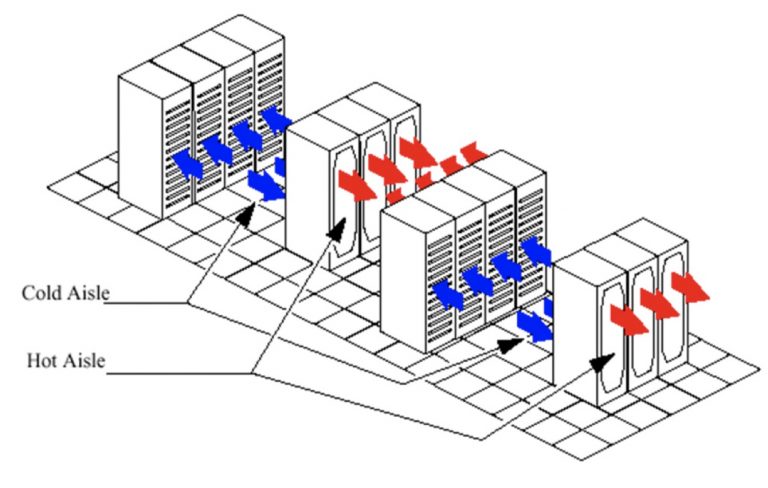
The Following Are Some Of The Benefits Of Hot Aisle Containment:
- Improved energy efficiency, with energy savings of 40% or more when compared to an uncontained environment.
- The data center’s open sections are cool, and they can be used for low-density racks or storage cabinets.
- For technicians and engineers, the uncontained area provides a more comfortable working environment.
- Because hot air is correctly recovered, accurate supply air distribution is less important.
- It is possible to avoid the use of costly raised floor distribution systems and supply ducts.
The Following Are Some Of The Benefits Of Cold Aisle Containment:
- Easy to implement without the need for additional fabrication to contain and return exhaust air such as a drop ceiling or air plenum.
- Typically less expensive to install than hot aisle containment.
- Easier to retrofit in existing data centers.
- Doesn’t need to be on a raised floor, though it often is.
Containment’s acceptance as airflow management (AFM) technology has been influenced by a number of factors. The following are some of the key drivers:
- The requirement to lower operating expenses by improving the efficiency of the cooling infrastructure.
- The necessity to reduce the temperature of IT equipment’s intake air.
- The need to increase the utilization of computer room space.
According to recent research by the Uptime Institute, 78% of big data center operators have already used containment. However, there are still a few common myths and half-truths concerning the benefits of containment.
Myths Of Containment In Data Center
1. Eliminates Bypass Airflow
- The total amount of air produced by the cooling units is decreasing.
- IT equipment necessitates a greater volume of air.
2. Containment ALONE Can Reduce Operating Costs
3. Perforated-Tile Placement Doesn’t Matter Anymore
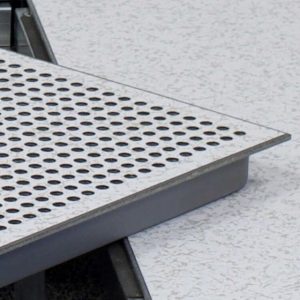 In chilly aisles, it is commonly assumed that two full rows of perforated tiles should be used. Containment keeps conditioned air from mingling with hot exhaust air before it enters IT equipment, but it doesn’t balance the total flow rate of conditioned air with the total flow rate required by IT equipment.
In chilly aisles, it is commonly assumed that two full rows of perforated tiles should be used. Containment keeps conditioned air from mingling with hot exhaust air before it enters IT equipment, but it doesn’t balance the total flow rate of conditioned air with the total flow rate required by IT equipment.4. Containment Increases The Return Air Temperature To Cooling Units
5. Containment Curtains Are Unnecessary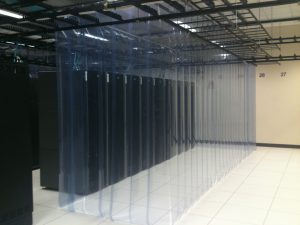
Data Center Containment and DCIM Software
- Maintain proper inlet temperatures in all of your containment aisle’s server racks.
- Increase temperature setpoints securely to save energy and promote green efforts.
- Increase uptime by receiving real-time alerts when preset thresholds are exceeded.
- Trend active power, energy costs, and environmental conditions quickly and easily.
- Other facility equipment, such as CRACs, building meters, PDUs, and UPSs, should be monitored.
- Produce energy cost reports for billing purposes.
AKCP Air Flow Monitoring Solutions
A data center’s reliability and safety come from a sound monitoring solution. As a vital part of data center management, monitoring should enable comprehensive tracking of environmental parameters in an IT environment.
The Cabinet Analysis Sensor (CAS) features a cabinet thermal map for detecting hot spots and a differential pressure sensor for analysis of airflow. Monitor up to 16 cabinets from a single IP address with the sensorProbeX+ base units.
Differential Temperature (△T)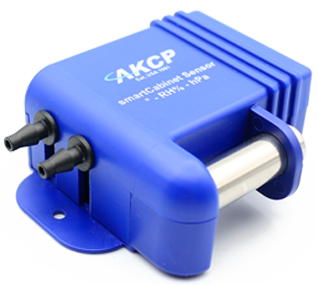
Two strings of 3x Temp and 1x Hum sensors make up the cabinet thermal maps. Keep an eye on the temperature in the front and back of the cabinet, as well as the top, middle, and bottom. In AKCPro Server cabinet rack map views, the△T value, or front to back temperature differential, is generated and shown with animated arrows.
Differential Pressure (△D)
To prevent air from mingling from the hot and cold aisles, there should always be positive pressure at the entrance of the cabinet. Because air goes from high to low-pressure zones, it’s critical to ensure that the front of the cabinet has higher pressure and the back has lower pressure for efficient cooling.
Rack Maps and Containment Views
Dedicated rack maps displaying data gathered by Cabinet Analysis Sensor can be configured with an L-DCIM or PC with AKCPro Server installed to give a visual depiction of each rack in your data center. Containment views can be set to display a sectional view of your racks and containment aisles if you’re operating a hot/cold aisle containment.
Reference Links:
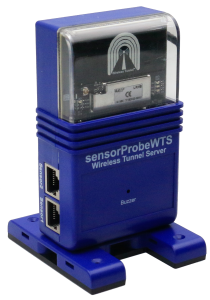
Security status: SECURE
Latest firmware: 1.0.419
Vulnerabilities: NONE
WTG units are running embedded RTOS (RealTime OS).
The lwIP network stack and a customized web server is used.
No shell access is provided.
Only the TLS v1.2 SSL protocol is enabled.
securityProbe (SEC5) products

Security status: SECURE
Latest firmware: 406g
Vulnerabilities: NONE
securityProbe units are running an embedded OS based on a customized Linux kernel.
The Linux network stack and a customized web server are used.
SSH and Telnet shell access are provided.
As of firmware 405u, only the TLS v1.2 SSL protocol is enabled.
sensorProbe (SP) products

Security status: ATTENTION
Latest firmware: 480
Vulnerabilities: SOME (see below)
sensorProbe units are running an embedded custom OS.
A customized embedded web server is used.
No shell access is provided.
Important: the sensorProbe family doesn’t provide support for any secure protocols such as SSL or HTTPS. Therefore, it doesn’t support secure email or web access, and only SNMP v1/2 is supported. This might make the product unsecured in some environments unless it’s running in an isolated network.
Security scan results:
Web Server Transmits Cleartext Credentials
The sensorProbe family doesn’t provide support for any secure protocols such as SSL or HTTPS. This might make the product unsecured in some environments unless it’s running in an isolated network.
AKCPro Server (APS)

VirusTotal scan results:
We regularly scan AKCPro Server binaries with VirusTotal. This is a free service that analyzes files and URLs for viruses, worms, trojans, and other kinds of malicious content.
VirusTotal inspects items with over 70 antivirus scanners and URL/domain blacklisting services, in addition to a myriad of tools to extract signals from the studied content. Any user can select a file from their computer using their browser and send it to VirusTotal.
Below is the scan result summary of each executable file used in APS. If there are some false-positive detections, we list them along with the functions of these binaries.
APS Installer file “AKCProServer-16.2.139.exe”
This file is the installer for the current version of APS.
VirusTotal lists 1 engine detected this file:
Bkav Pro: W32.AIDetectMalware
This is a false positive result, since only 1 of all antivirus engines have detected the file as malicious.
There are some patterns within this application that could resemble behavior of a virus, such as file installation and Registry modification.
“C:\Program Files (x86)\AKCP\AKCPro Server\uninst.exe”
The uninst.exe is the uninstaller EXE of APS, it performs file and registry removal functions when APS is uninstalled from a system.
VirusTotal lists 1 engine detected this file:
Bkav Pro: W32.AIDetectMalware
This is a false positive result, since only 1 of all antivirus engines have detected the file as malicious.
There are some patterns within this application that could resemble behavior of a virus, such as automatic service stopping and Registry modification.
“C:\Program Files (x86)\AKCP\AKCPro Server\bin\AKCProServer.exe”
AKCProServer.exe is the main process (Control) of APS.
“C:\Program Files (x86)\AKCP\AKCPro Server\bin\CustomNotification.exe”
CustomNotification.exe is a notification sub-module of APS.
“C:\Program Files (x86)\AKCP\AKCPro Server\bin\DbRecovery.exe”
The DbRecovery.exe is a standalone process of APS, it only runs when necessary. It is used for checking and fixing the internal database (SQLite) when needed.
“C:\Program Files (x86)\AKCP\AKCPro Server\bin\DialNotification.exe”
“C:\Program Files (x86)\AKCP\AKCPro Server\bin\DoorLockNotification.exe”
“C:\Program Files (x86)\AKCP\AKCPro Server\bin\DryContactNotification.exe”
“C:\Program Files (x86)\AKCP\AKCPro Server\bin\EmailNotification.exe”
The EmailNotification.exe is a notification sub-process of APS and is used for sending emails.
“C:\Program Files (x86)\AKCP\AKCPro Server\bin\FaxNotification.exe”
The FaxNotification.exe is a notification sub-process of APS and is used for sending faxes.
“C:\Program Files (x86)\AKCP\AKCPro Server\bin\FirmwareSerialUpgrade.exe”
The FirmwareSerialUpgrade.exe is a command-line utility, which can be used for upgrading the firmware of wireless sensors (BOS/WTS/SP-WT).
“C:\Program Files (x86)\AKCP\AKCPro Server\bin\FTPNotification.exe”
“C:\Program Files (x86)\AKCP\AKCPro Server\bin\MMSNotification.exe”
The MMSNotification.exe is a notification sub-process of APS and is used for sending MMSes.
“C:\Program Files (x86)\AKCP\AKCPro Server\bin\ModbusNotification.exe”
“C:\Program Files (x86)\AKCP\AKCPro Server\bin\notificationServer.exe”
The notificationServer.exe is the notification handler sub-process of APS and is used for controlling each notification.
“C:\Program Files (x86)\AKCP\AKCPro Server\bin\RecorderNotification.exe”
“C:\Program Files (x86)\AKCP\AKCPro Server\bin\RelayNotification.exe”
“C:\Program Files (x86)\AKCP\AKCPro Server\bin\serverManagerService.exe”
“C:\Program Files (x86)\AKCP\AKCPro Server\bin\serverManagerUI.exe”
“C:\Program Files (x86)\AKCP\AKCPro Server\bin\ShutdownNotification.exe”
The ShutdownNotification.exe is a notification sub-process of APS and is used for sending a shutdown command to a prepared Unix or Windows system (for example when power failure is detected).
“C:\Program Files (x86)\AKCP\AKCPro Server\bin\SirenNotification.exe”
“C:\Program Files (x86)\AKCP\AKCPro Server\bin\SkypeNotification.exe”
The SkypeNotification.exe is a notification sub-process of APS and is used for sending Skype messages.
“C:\Program Files (x86)\AKCP\AKCPro Server\bin\SMSNotification.exe”
The SMSNotification.exe is a notification sub-process of APS and is used for sending SMS notification messages to mobile phones using supported modems.
“C:\Program Files (x86)\AKCP\AKCPro Server\bin\SnmpSetNotification.exe”
“C:\Program Files (x86)\AKCP\AKCPro Server\bin\SoundNotification.exe”
The SoundNotification.exe is a notification sub-process of APS and is used for generating sound notification messages on the local PC.
“C:\Program Files (x86)\AKCP\AKCPro Server\bin\SpeechNotification.exe”
The SpeechNotification.exe is a notification sub-process of APS and is used for sending telephone call (voice) notification messages to mobile phones using supported modems.
“C:\Program Files (x86)\AKCP\AKCPro Server\bin\StopRecorderNotification.exe”
“C:\Program Files (x86)\AKCP\AKCPro Server\bin\TrapNotification.exe”
“C:\Program Files (x86)\AKCP\AKCPro Server\bin\VPNAuthen.exe”
“C:\Program Files (x86)\AKCP\AKCPro Server\bin\WindowsNotification.exe”
The WindowsNotification.exe is a notification sub-process of APS and is used for sending Windows alerts (requires the Windows Alert installed on the target machine).
